Top 10 Workout Warm-Up Exercises to Boost Performance and Prevent Injury Without Equipment
This post may contain affiliate links. If you purchase through these links, I may earn a small commission at no extra cost to you. LEARN MORE.
Warming up before a workout is not just a good habit—it’s a smart way to take care of your body and see better results from each session.
The right warm-up exercises help get your muscles ready, increase your blood flow, and lower your chances of injury, all without any special equipment.
Whether you’re training at home or at the gym, a solid warm-up routine is your best first step.
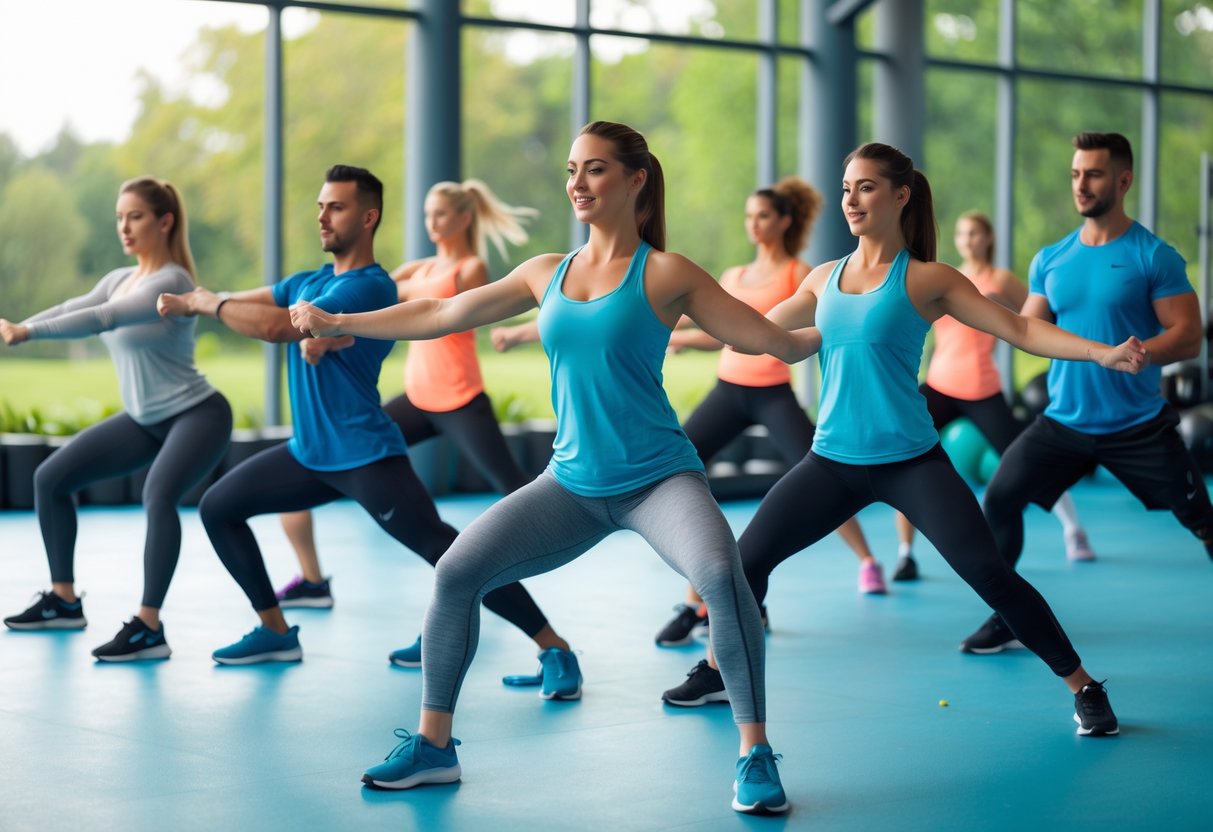
You don’t need fancy gear or a lot of space to get started.
Simple, effective moves like jumping jacks, arm circles, and lunges target the big muscle groups and prepare your whole body.
Taking a few minutes to warm up also helps boost your focus and energy, making your workout feel easier and more effective.
If you’re just starting out, you may also find our guide on how to structure a beginner-safe home workout routine helpful for planning your fitness journey.
Key Takeaways
- Warm-ups improve performance and help prevent injury.
- Effective routines need only bodyweight exercises.
- Simple movements can target all major muscle groups.
Why Warm-Up Exercises Are Essential
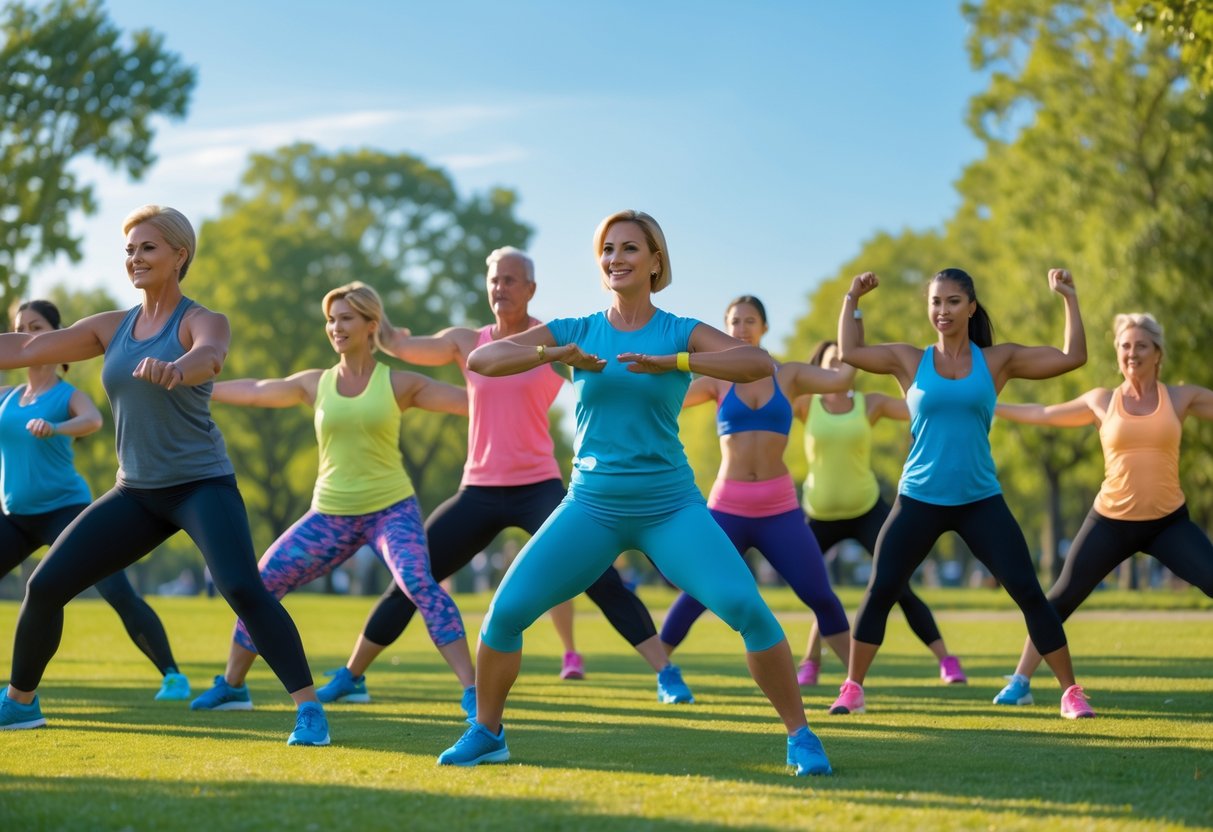
A good warm-up helps prepare your muscles and joints, lowers the risk of strains, and lets your body ease into exercise.
Warming up also helps you perform better by getting your heart, lungs, and muscles ready for physical activity.
Reducing Risk of Injury
Warm-up exercises help prevent common injuries such as strains, sprains, and muscle pulls.
By slowly raising your heart rate and increasing blood flow, your muscles become less stiff and more flexible.
This makes sudden movements or heavier actions less likely to cause harm.
Dynamic movements like arm circles, leg swings, or gentle jogging get your joints moving and muscles heated up.
These exercises prepare your tendons and ligaments for activity, making them more resilient.
A proper warm-up also wakes up your nervous system, so you feel more in control of your body.
This decreases the risk of awkward steps, slips, or other minor accidents during your workout or sport.
If flexibility is a struggle, try the Hyperbolic Stretching program to improve mobility and reduce your injury risk in under 8 minutes a day.
Boosting Athletic Performance
Starting your workout with a warm-up increases how much you can do and how well you do it.
As your heart rate increases and blood flow improves, your muscles receive more oxygen and important nutrients.
This lets you move with better coordination and feel less muscle stiffness.
Warming up can also improve your reaction time, balance, and focus, which are key to sports and fitness.
For runners, a good warm-up can help you start faster and maintain speed longer.
In strength training, it lets you lift weight with better form and less discomfort.
Physiological Benefits of Warming Up
A warm-up causes your core body temperature to rise.
Warmer muscles contract and relax more easily, making each movement safer and more effective.
Your joints also become more mobile, so you can stretch or reach without discomfort.
Warming up boosts blood flow throughout your body, which helps deliver more oxygen to your muscles.
This process helps break down nutrients you need for energy, so you can exercise harder or longer.
Another key benefit is that your breathing rate increases, helping you take in more oxygen right from the start.
All these changes prepare your entire body for exercise and help you feel less out of breath in the first minutes of your workout.
Fundamentals of a Proper Warm-Up Routine
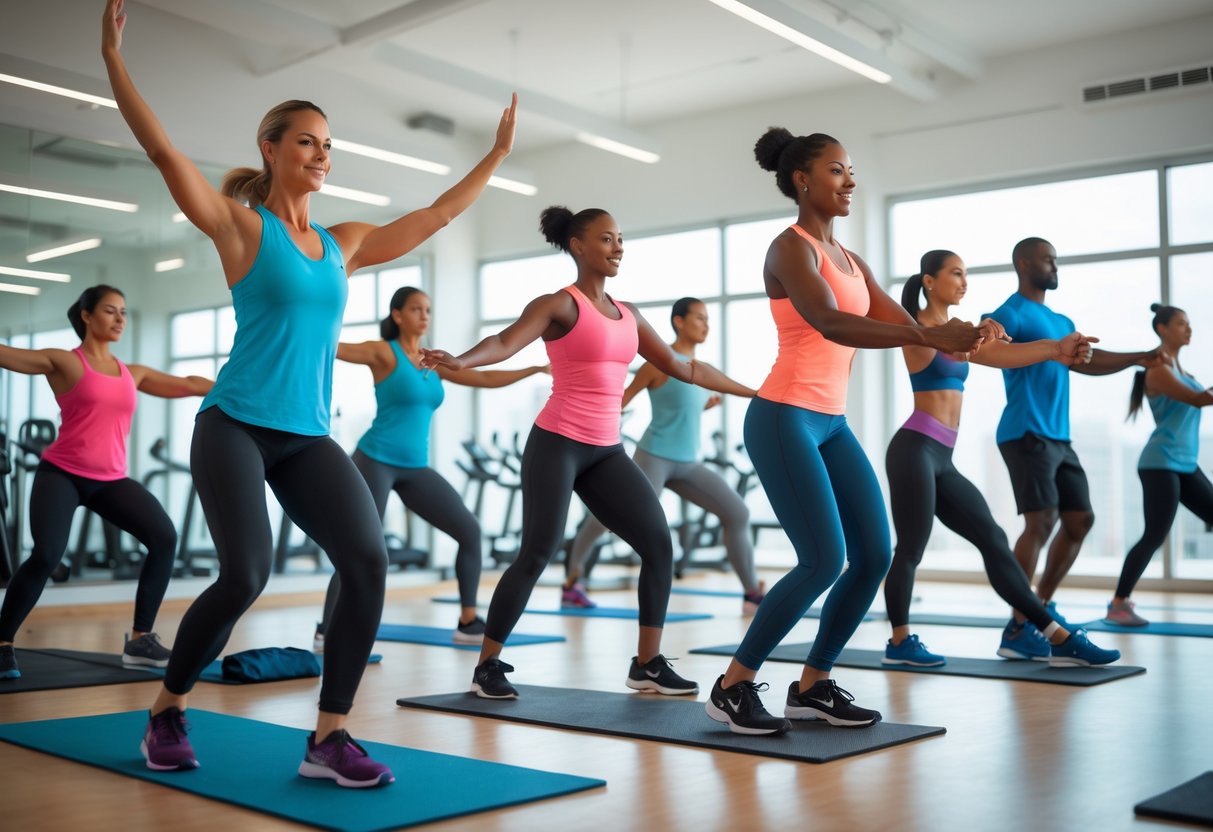
A good warm-up routine gets your body ready for exercise and helps prevent injury.
It focuses on increasing blood flow, improving range of motion, and activating the muscles you plan to use.
Duration and Structure
A proper warm-up usually lasts between 5 and 10 minutes.
The right length depends on your fitness level, the intensity of your workout, and the activity you have planned.
Start with light cardio, such as jogging in place or brisk walking, for about 2–3 minutes.
This slowly raises your heart rate and body temperature.
Follow with dynamic warm-up exercises that target your major muscle groups.
You can use a simple structure like this:
| Part | Time | Example Activities |
|---|---|---|
| Light Cardio | 2–3 min | Jog in place, jump rope, brisk walk |
| Dynamic Movements | 3–7 min | Arm circles, knee lifts, lunges |
The goal is to feel a gentle increase in body heat and slight sweat, not fatigue.
Dynamic vs. Static Stretching
Dynamic stretching involves moving your muscles and joints through a full range of motion.
Examples include arm swings, leg swings, and walking lunges.
Before a workout, dynamic stretching helps boost blood flow, improve flexibility, and activate the nervous system.
This prepares your body for movement and reduces your risk of injury.
Static stretching means holding a stretch for several seconds without movement.
Save these stretches for after your workout because static stretching before exercise may temporarily lower muscle strength and power.
Use dynamic stretching in your pre-workout routine, focusing on the muscles you plan to work.
Learn how to incorporate dynamic stretches into your 30-day home workout challenge to stay limber and build consistency.
Tailoring Warm-Ups to Activity
Your warm-up should match the type of workout you are about to do.
If you plan to run, focus on dynamic movements for your legs, such as high knees or butt kicks.
For strength training, include compound dynamic exercises like bodyweight squats or arm circles that activate the muscles you will lift with.
Make sure your movements mimic the range of motion required in your main workout.
If you have tight or weak areas, add gentle dynamic moves to wake up those muscles.
Adjust the intensity based on how hard your workout will be, but avoid high-impact exercises during your warm-up.
Top 10 Workout Warm-Up Exercises (No Equipment Needed)
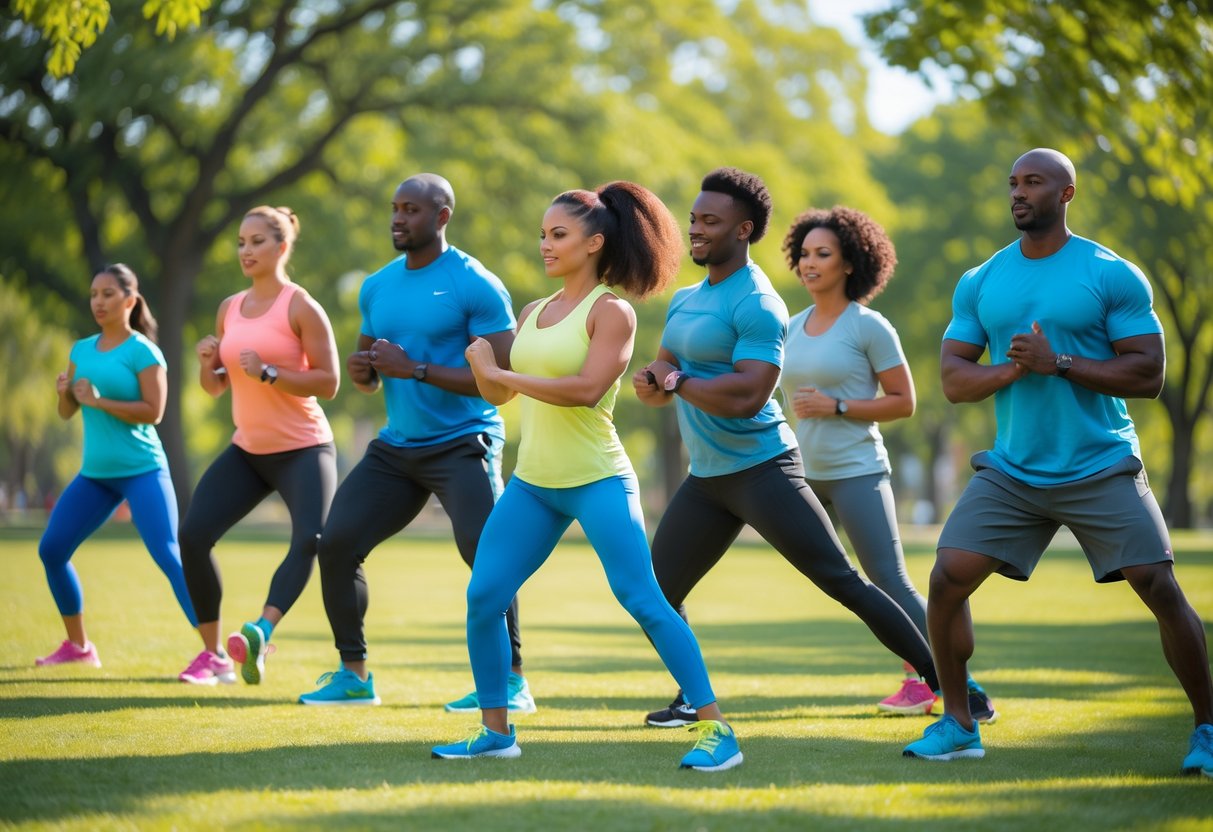
Getting warmed up helps prepare your muscles, joints, and heart for exercise.
These bodyweight warm-ups are simple, effective, and require no equipment.
Jumping Jacks
Jumping jacks are a classic way to get your whole body moving.
This exercise increases your heart rate quickly and helps your body get ready for tougher movements.
To do a jumping jack, stand with your feet together and arms at your sides.
Jump up while spreading your legs shoulder-width apart and bringing your arms overhead.
Then, jump back to the starting position.
You can control the speed to match your fitness level.
Aim to do 20 to 40 repetitions for a light warm-up, or go for 60 seconds to get your heart pumping more.
Jumping jacks wake up your legs, core, and shoulders.
They help improve coordination and make your body feel alert for your main workout.
High Knees
High knees are great for warming up your hips, legs, and core.
They also get your heart pumping fast, which can help your body perform better.
Stand tall with your feet hip-width apart.
Quickly bring one knee up toward your chest, then switch to the other knee, moving at a quick pace.
Swing your arms naturally or keep them out in front to lightly tap your knees.
Do high knees for 30 to 60 seconds or count 20-30 reps per leg.
Focus on good posture, keeping your back straight and landing softly on your toes.
High knees are helpful before running, sports, or any workout that uses the legs.
This move will improve your balance and increase your muscle flexibility.
Arm Circles
Arm circles target your shoulders, upper arms, and upper back.
This move is important for making sure the small muscles around your shoulder joints are prepared.
Stand up tall with your arms extended to the sides at shoulder height.
Start making small circles with your hands, gradually making the circles bigger.
Continue for 20 seconds in one direction, then reverse.
You can change the size and speed of your circles, but do not rush.
Focus on control and keeping your arms level.
Arm circles improve shoulder mobility, help prevent strains, and make pressing or lifting movements safer.
Leg Swings
Leg swings warm up your hips, legs, and lower back.
They are good for boosting flexibility and range of motion in your lower body.
Stand near a wall or sturdy surface for balance.
Swing one leg forward and backward in a controlled motion, keeping your torso upright.
Do 10-15 swings on one leg, then switch to the other.
You can also swing your leg side to side to work your hip muscles from different angles.
This exercise helps loosen stiff joints and muscles in your hips and legs, reducing the risk of pulling a muscle during your workout.
Be mindful not to swing too high or too fast.
Concentrate on smooth, controlled movements to get the most benefit.
More Essential Warm-Up Movements
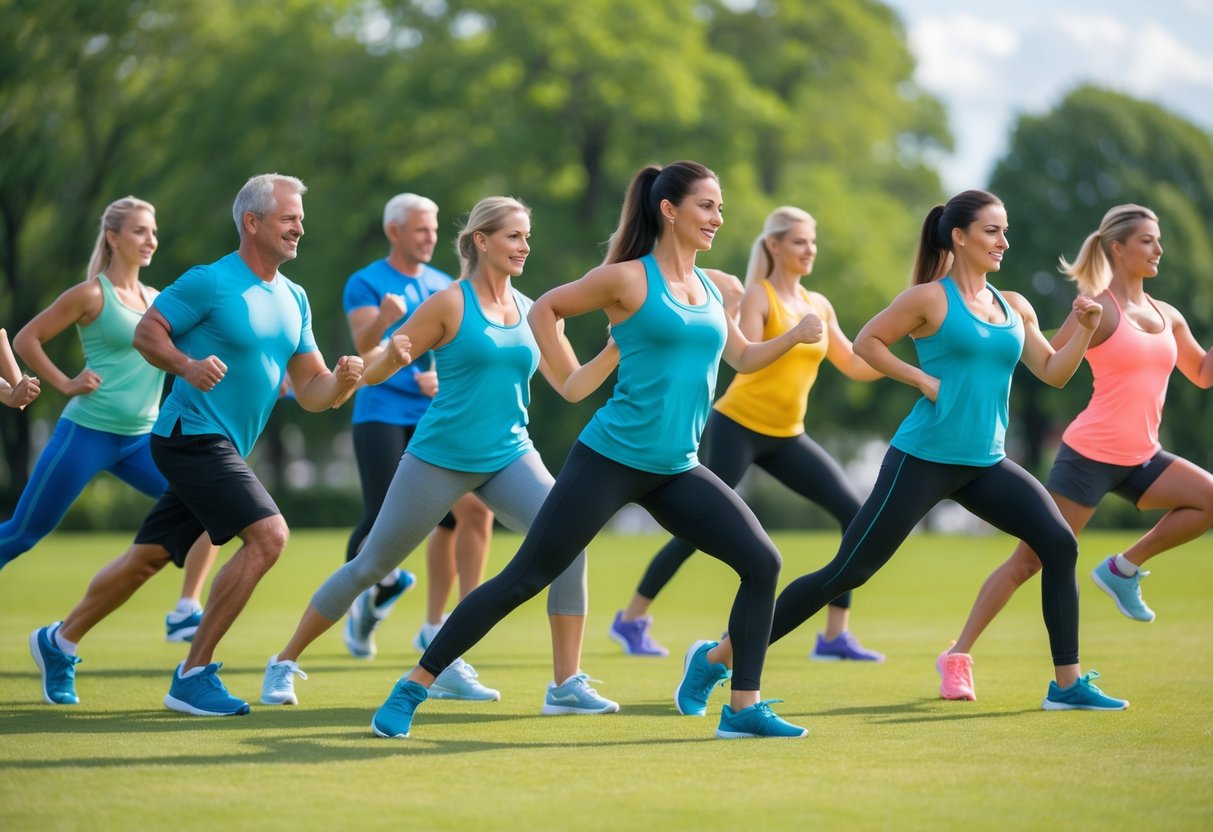
These movements help activate large muscle groups, loosen your hips, and boost flexibility.
Practicing these exercises improves range of motion and increases blood flow to important areas before you start your main workout.
Hip Rotations
Hip rotations help increase hip mobility, which is important for all kinds of movement.
Standing tall with your feet shoulder-width apart, place your hands on your hips for balance.
Slowly rotate your hips in a big circle, making five circles clockwise and then five counterclockwise.
This exercise wakes up your hip joints and muscles around your pelvis.
It helps reduce stiffness and prepares your lower body for deeper squats, lunges, and running motions.
Hip rotations are also useful for keeping your back safe by making sure your hips are loose.
Tips for good hip rotations:
- Keep your upper body still as much as possible.
- Move slowly and control the motion.
- Focus on making the biggest circles you can without any pain.
Performing hip rotations daily can help you move better and lower your risk of hip discomfort during your workout.
Butt Kicks
Butt kicks are a light cardio move that warms up your hamstrings and stretches your quads at the same time.
To perform butt kicks, stand in place and jog lightly, kicking your heels up toward your glutes with each step.
Aim for a rhythm that feels comfortable, working up to 30 seconds or about 20 reps per leg.
This gets your blood flowing and fires up your legs for running, jumping, or cycling.
Benefits of butt kicks:
- Warms up knee and ankle joints
- Prepares hamstrings for quick movements
- Engages hip flexors and improves flexibility
If you struggle to touch your heels to your glutes at first, don’t worry.
Focus on raising them as high as you can, and avoid moving too fast or leaning forward.
Bodyweight Squats
Bodyweight squats are key for turning on your glutes, quads, and calves before exercise.
Stand with feet shoulder-width apart and lower your hips like you’re sitting into a chair.
Keep your heels on the ground and your chest up.
Go as low as you comfortably can without your knees pushing past your toes.
Aim for 10 to 15 reps, moving at a steady pace.
Benefits of squats as a warm-up include:
- Building better hip and knee mobility
- Activating core muscles
- Improving balance and control
A good squat warms up your legs for lifting, running, or sports.
If you want extra activation, try pausing for a second at the bottom of each squat.
For leg-focused routines that don’t strain joints, check out home workout leg exercises for strength and fat loss.
Lunges
Lunges get your glutes, quads, hamstrings, and hips moving with a single exercise. Start by standing upright and taking a big step forward.
Lower your back knee toward the floor, keeping your front knee above your ankle. Push back up to standing and repeat with the other leg.
Aim for 8 to 10 lunges per side. Lunges are great for stretching the hips and increasing balance.
They also build strength for movements like climbing stairs or lifting weights.
Focus on form:
- Keep your chest lifted
- Avoid letting your front knee collapse inward
- Take slow, controlled steps
If space is limited, perform stationary lunges in place. This move is a solid choice for improving hip mobility and getting your lower body ready for exercise.
Targeting Key Muscle Groups During Warm-Ups
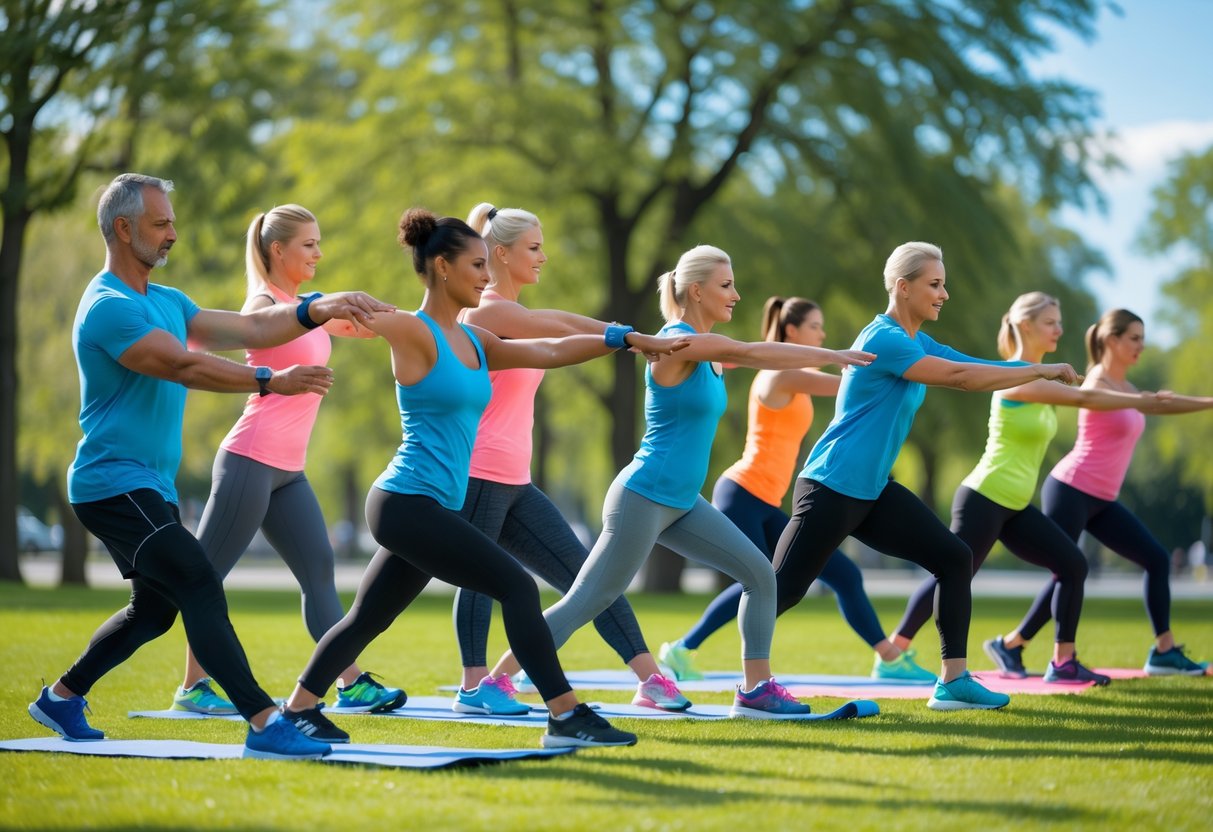
Warming up the right muscle groups helps lower your injury risk and gets your body ready for better performance. Focusing on the main areas like your legs, core, and upper body ensures every part works well when you start your workout.
Glutes, Hamstrings, and Quadriceps
Your glutes, hamstrings, and quadriceps play a big role in many exercises, especially lower body moves like squats and lunges. Getting these muscles ready helps you move better and protects your knees and hips.
Dynamic movements such as bodyweight squats, lunges, and glute bridges are effective. When you do bodyweight squats, keep your feet shoulder-width apart and push your hips back as you descend.
Try walking lunges, stepping forward and lowering your back knee close to the ground.
A good routine could include:
- 10-15 bodyweight squats
- 10-12 walking lunges per leg
- 10-12 glute bridges
These moves raise blood flow and activate the muscles. They prepare you for tasks that need power and stability from your lower body.
Core and Obliques
Warming up your core helps stabilize your spine and improves your balance. This includes your abs as well as your obliques, which are the muscles on the sides of your torso.
You should include moves like plank holds, mountain climbers, and standing trunk rotations.
Try to keep the core tight and your hips steady during each exercise.
Sample routine for your core and obliques:
- Plank hold: 20-30 seconds
- 15-20 mountain climbers per leg
- 10-12 standing trunk rotations per side
Read our guide on how core circuits can improve balance and full-body strength.
Shoulders and Triceps
Upper body warm-ups target your shoulders and triceps, key muscles for pressing, pulling, and lifting motions. Starting cold can leave these joints stiff, which increases injury risk.
Arm circles, shoulder taps, and triceps extensions without weights are simple yet effective. Arm circles help loosen the entire shoulder and increase blood flow.
Shoulder taps in plank position activate your shoulders and triceps by forcing them to stabilize your body.
A basic upper body warm-up set:
- 10 forward arm circles, 10 backward arm circles
- 12-16 shoulder taps per side
- 10-12 standing or bent-over triceps extensions
Maximizing Cardiovascular Fitness and Agility
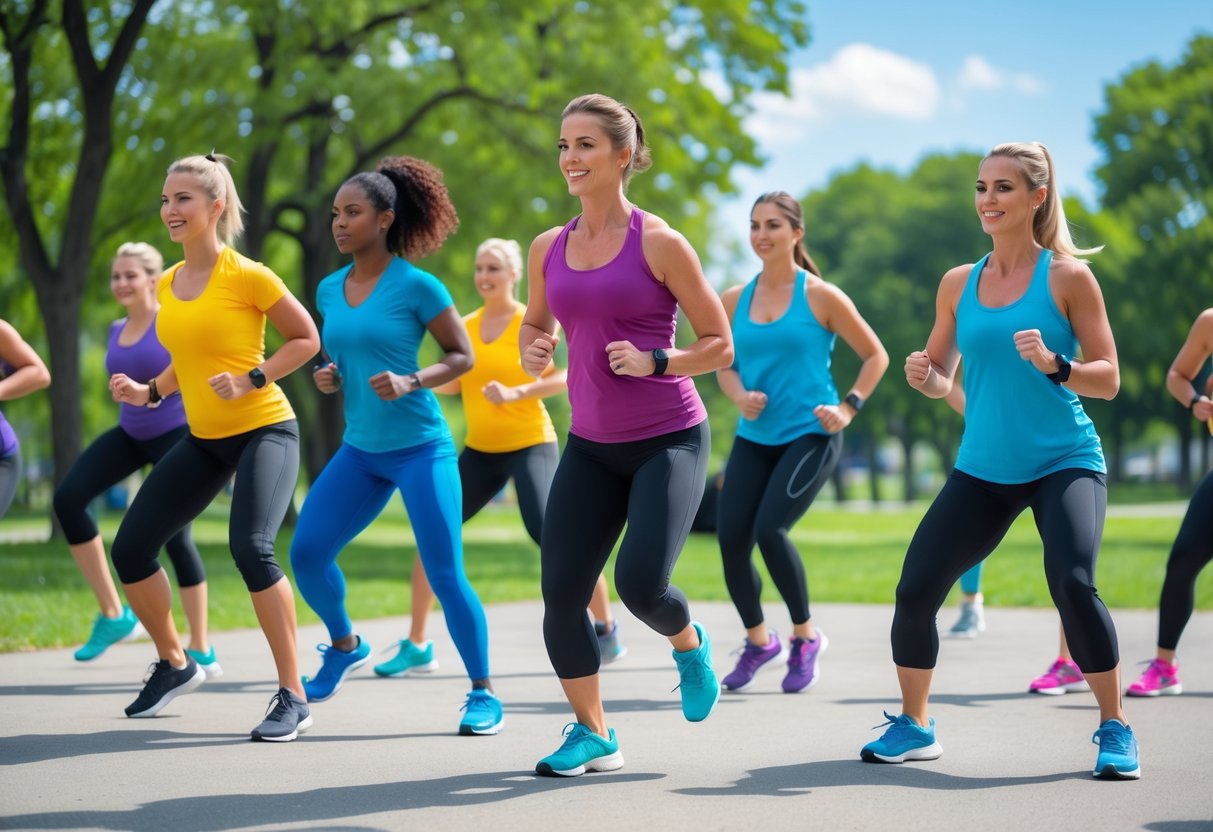
Increasing your heart rate before exercise strengthens your heart and helps deliver more oxygen to muscles. Dynamic warm-up drills also boost your agility and allow you to move more quickly and safely during your workout.
Heart Rate Elevation
Raising your heart rate at the beginning of your warm-up primes your cardiovascular system for more intense activity. This process improves the flow of blood and oxygen, which supports muscle function and endurance.
Simple exercises like brisk walking in place, jumping jacks, high knees, or butt kicks are effective.
Aim for steady movement for 3-5 minutes, moving at a moderate pace to get your breathing slightly heavier, but not exhausted.
You can track your effort by checking your pulse or using a fitness tracker. A good target is to reach about 50-60% of your maximum heart rate during your warm-up.
This range is enough to activate your cardiovascular system without causing fatigue.
Pair your warm-up with Java Burn, a natural coffee-enhancing supplement that may help increase metabolism during cardio and fat-burning workouts.
Improving Agility and Coordination
Agility helps you change direction quickly and move efficiently. Coordination is about timing and controlling your muscles.
Warm-up movements such as side shuffles, grapevines, and fast feet drills are good choices. These exercises require you to react and adjust your body quickly.
They also train your balance and rhythm.
Include 1-2 agility drills in your warm-up, spending about 30 seconds on each.
Focus on smooth, controlled motions rather than speed until your body feels loose.
Common Mistakes and Tips for Effective Warm-Ups
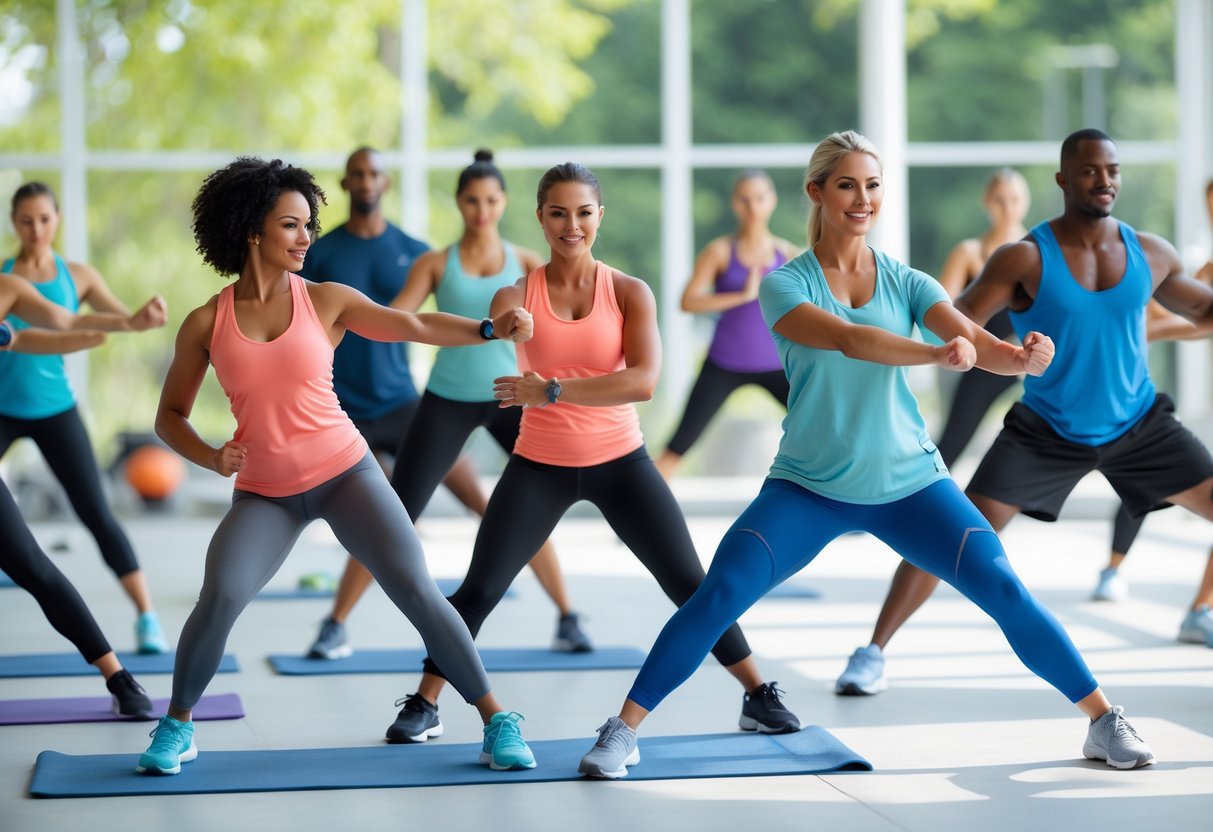
Preparing your body with the right warm-up helps with muscle activation and improves flexibility. Avoiding common mistakes can make your warm-up more safe and useful for strength training and any other workout.
Skipping the Warm-Up
Many people skip the warm-up step to save time, but this can lead to injuries and poor performance. Warming up gets blood flowing to your muscles and increases your heart rate.
When your muscles get more oxygen, they work better and are less likely to get strained. A proper warm-up also gets your joints ready for action.
This is important in strength training and activities that place stress on your joints. Even five minutes of simple movements can lower your risk of injury.
Some quick warm-up ideas include:
- Light jogging in place
- Arm and leg swings
- Dynamic stretches, like walking lunges
Take a few minutes to warm up before every workout, no matter how short.
Overstretching
Overstretching, or holding long static stretches before exercise, is a common mistake that can make your muscles weaker and less ready for action. Before a workout, your muscles need to be alert and engaged—not stretched to their limit.
Think of stretching like a rubber band. If you pull it too far before using it, it may not snap back as strongly.
The same can happen to your muscles.
Instead of static stretches, do dynamic stretches that move your joints and muscles through a safe range of motion. Save the deep stretching for after your workout, when your muscles are already warm.
Try these dynamic moves before activity:
- Leg swings front to back
- Arm circles
- Torso twists
Progression and Modification for All Levels
Everyone has a different fitness level, and your warm-up should reflect what your body needs. Using the same routine for every workout or every person can cause problems, especially if the moves are too hard or too easy.
Progression means starting simple and building up as your body gets warmer and more used to movement. For example, start with walking or slow marching, then move up to light jogging or high knees.
Modifying exercises helps you avoid pain or strain. If jumping jacks feel too hard, do regular step jacks or march in place.
Focus on how your body feels, and change moves if something hurts.
A good warm-up should get your heart rate up, gently stretch your muscles, and activate the right areas for the workout you plan to do.
Listen to your body and adjust as needed for the best results.
Frequently Asked Questions
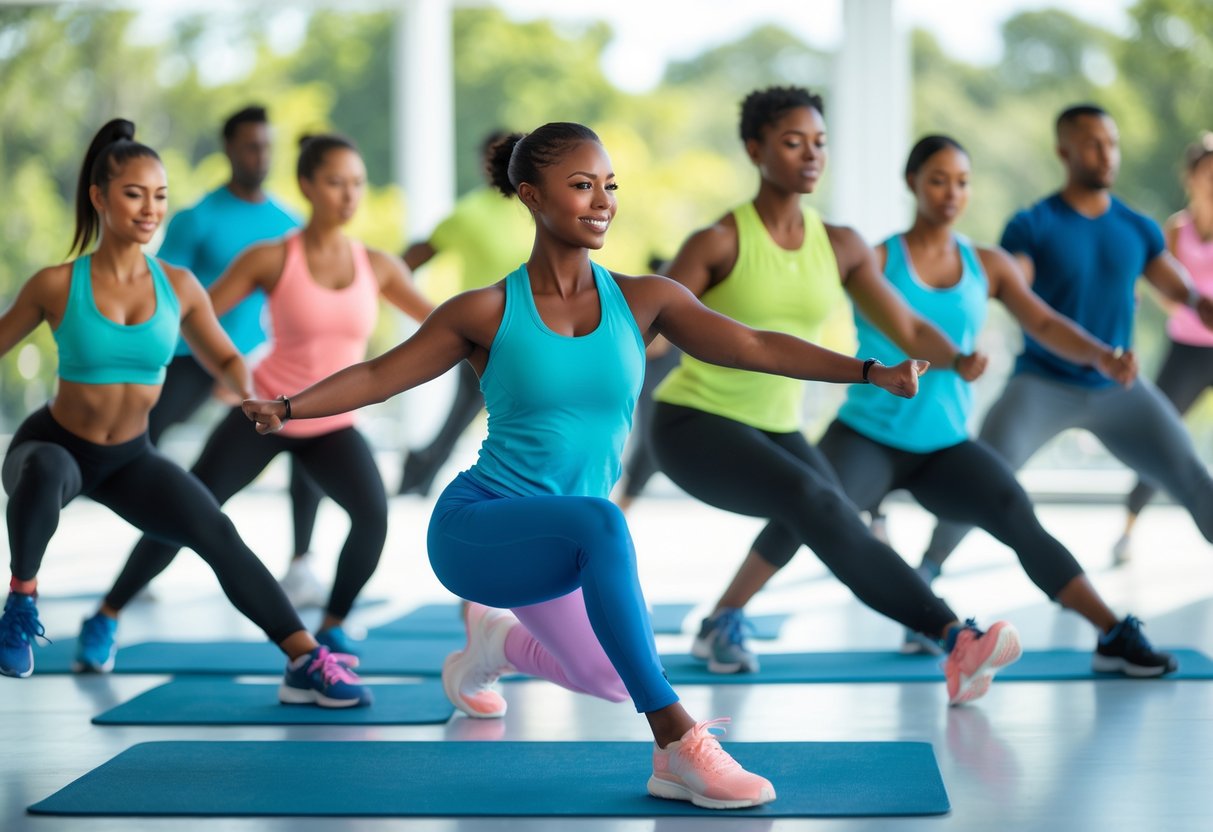
A good workout warm-up helps get your muscles ready, raises your heart rate, and lowers your risk of injury. You do not need any special equipment to prepare your whole body for exercise.
What are some effective full-body warm-up exercises that can be done at home?
Marching in place, arm circles, jumping jacks, bodyweight squats, and high knees are all effective. These movements work several muscles at once and help boost blood flow.
They are easy to do in small spaces.
Can you provide a step-by-step list of dynamic warm-up movements?
Start with 30 seconds of marching or jogging in place.
Move to 15 arm circles forward and backward.
Follow with 15 bodyweight squats.
Next, do 10 lunges on each leg.
Finish with 20 jumping jacks.
What are the essential warm-up exercises for beginners to perform before a workout?
Focus on low-impact moves like marching in place, gentle lunges, shoulder rolls, and hip circles.
Stretch your arms overhead and reach side to side.
Use slow, steady movements to activate major muscle groups without strain.
How do you structure a no-equipment warm-up routine for optimal performance?
Begin with easy movements to increase your heart rate.
Add dynamic stretches that target the legs, arms, and core.
Make sure to work each main area of your body for 30 to 60 seconds.
Finish your warm-up in about 5 to 10 minutes.
What are the best warm-up exercises to prevent injury during intense workouts?
Dynamic stretches like walking lunges, butt kicks, high knees, and arm swings are helpful.
Squats and leg swings can prepare the lower body for more intense moves.
Include exercises that mimic parts of your workout for the best results.
Could you list a comprehensive head-to-toe warm-up sequence?
- Neck rolls
- Shoulder rolls
- Arm circles
- Torso twists
- Hip circles
- Walking lunges
- High knees
- Butt kicks
- Bodyweight squats
- Ankle circles
Perform each movement for 30 seconds for a rounded warm-up.
Conclusion
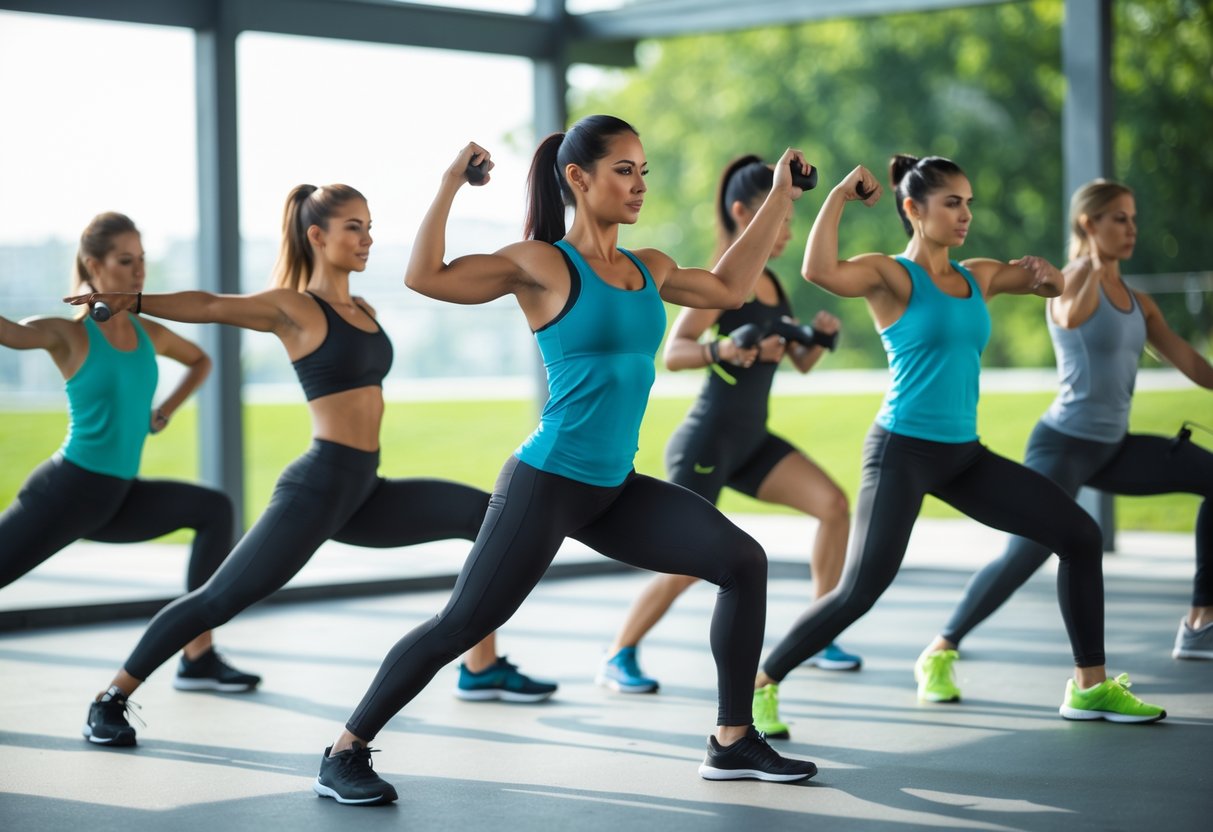
Taking time to warm up helps your muscles and joints get ready for exercise.
It reduces your risk of getting hurt and can lead to better workouts.
You don’t need any special equipment.
Just use your own body weight and move through each exercise with care and focus.
These simple warm-up moves support your range of motion and get your blood flowing.
You can adjust the order and number of repetitions based on your needs or fitness level.
If something doesn’t feel right, stop and try a different move.
Spending even 5-10 minutes on these exercises can help you feel more prepared and confident when starting any workout.
Want to accelerate your fat loss results alongside your training? Take this free Keto Creator quiz to get a custom low-carb meal plan based on your body type and fitness goals.
